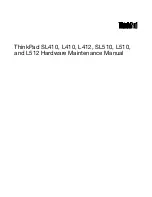
Restore Overview
124 Agent for Microsoft SQL Server Guide
Microsoft SQL Server locks a database while restoring it, so that the database
cannot be modified during the restore operation. However, users can access and
modify other Microsoft SQL Server databases during this time.
Note
: If a restore is attempted when you are accessing a database, Microsoft
SQL Server will not allow the restore operation.
Important!
By default, Microsoft SQL Server 2005 will not allow a restore to be
attempted if a database is online and is using the Full or Bulk-Logged Recovery
Models. To restore these databases, you must either take the database offline by
performing a Transaction Log backup with the Log Tail option so that no
transactions are lost, or restore with the Overwrite Existing Database and Files
(“WITH REPLACE”) option. The only exception to this is an Online Torn Page
Repair restore.
If a failure occurs while a database is being restored, Microsoft SQL Server
notifies the system administrator but does not recover the partially restored
database. You must restart the database restore to complete the restore job.
Note
: If you cancel a restore job, the database may be left in a loading state and
will be unusable until the restore sequence is completed. If the session that was
being restored when the job was cancelled is not the first session in the restore
sequence, you may have to start the restore sequence over from the beginning.
The destination database must have at least as much storage space available for
it as the backed up database. The actual amount of data in the backed up
database is not relevant for this requirement. To get information about allocated
storage space, use the Microsoft SQL Enterprise Manager or Management
Studio, or the DBCC CHECKALLOC statement. If the database is offline, then
check the file sizes listed in the file tree of the Agent Restore Options dialog for
that session, or in the ARCserve Database Manager view.
If you have a media failure, restart Microsoft SQL Server. If, after a media
failure, Microsoft SQL Server cannot access a database, it marks the database as
Suspect, locks it, and displays a warning message. You may have to drop
(detach from Microsoft SQL Server) a damaged database, a process that you can
perform using the Microsoft SQL Server Enterprise Manager or Management
Studio.
Restore Types and Methods
You can restore from the following types of backup sessions:
■
Database Full and Differential backups
■
Partial Full and Differential backups
■
Transaction log backups
■
File and FileGroup Full and Differential backups














































